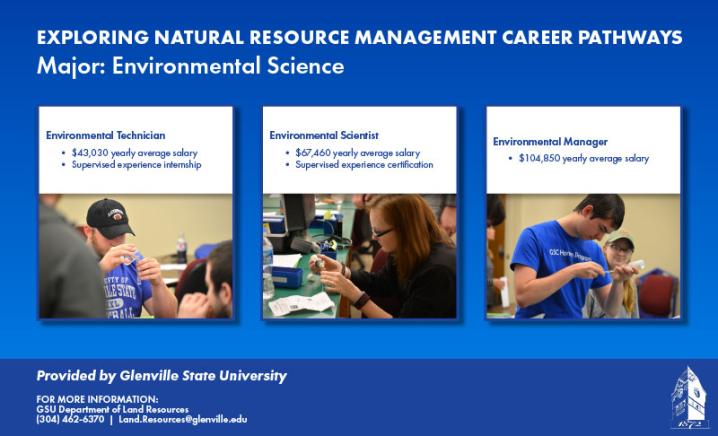Environmental Science Major
The Environmental Science major is designed for those students interested in environmental careers with government agencies and industry. This major prepares students for career opportunities in the private, public, academic and nonprofit sectors. Employers may include Federal, state, and local governments; the natural resource sector; utilities; manufacturers; and industry, as well as small business.


Mission Statement
The mission of the Environmental Science concentration within the Natural Resource Management degree program is to graduate students with the knowledge and technological skills needed to prevent, or define and manage environmental problems. Consequently, the program provides a foundation in the pure and applied sciences. The knowledge and skills help prepare students for careers with industry or governmental agencies.
Objectives
A graduate of this program will:
- Develop an understanding of ecological, chemical, waste management, energy resource, environmental media (air, water, soil) and health and safety concepts.
- Develop an understanding of the natural components of environmental media and man’s impact upon their quality.
- Develop an understanding of land-based renewable resources including forests, rangeland, farmland, outdoor recreation, and wildlife.
- Develop an understanding of the major state and federal environmental laws and regulations.
- Develop an understanding of on-site versus off-site environmental impacts and the use of risk assessment as an indicator of environmental impacts.
- Evaluate economic, political and social concepts impacting sustainable development and use of natural resources.
- Evaluate the impact of the removal of mineral and energy resources.
- Learn technical approaches including principles of map reading and surveying, computer applications, and be able to review and interpret spatial data.
- Understand the organizational structure of activities including adequate planning, developing schedules and budgets, integrating quality assurance and health and safety, working as a team, and communicating to diverse audiences.
- Become conversant in the terminology used in the industry.

